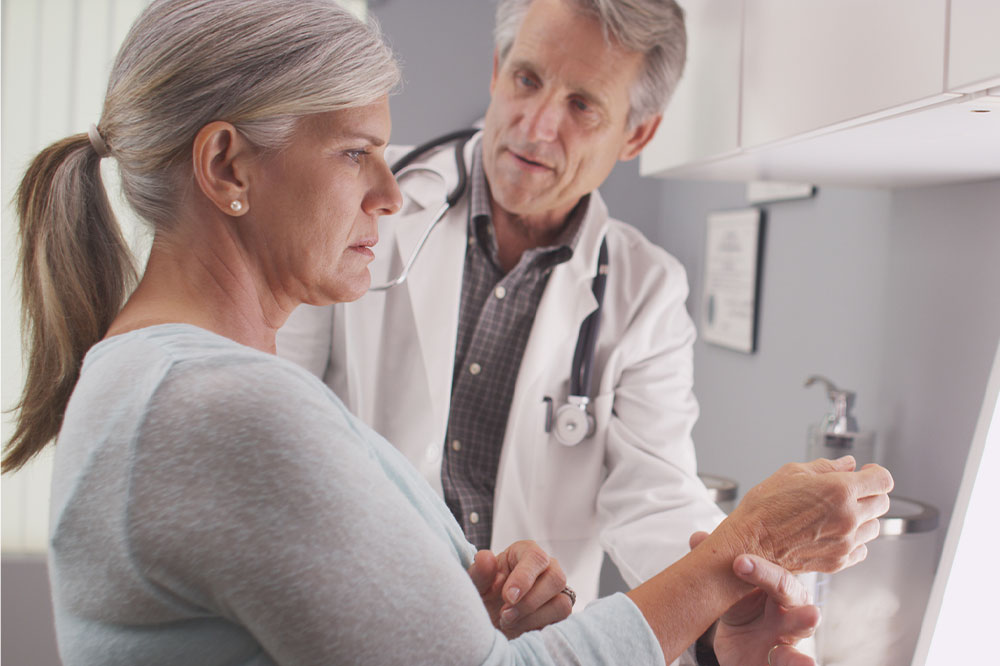Understanding high cholesterol – Its symptoms and associated risk factors

Cholesterol is a waxy, fat-like substance produced by the liver. It builds healthy cell membranes, vitamin D, and certain hormones. Since it cannot dissolve in water, it does not travel through the bloodstream. It is carried by lipoproteins, which are low-density lipoproteins (LDLs, or bad cholesterol) and high-density lipoproteins (HDLs, or good cholesterol). High amounts of LDL or low amounts of HDL can lead to fatty buildup in the blood vessels.
High cholesterol
To find out one’s cholesterol levels, a lipid profile may be required. Here’s what the results mean:
- Total cholesterol in adults
These are the parameters to check one’s total cholesterol:- Normal: Less than 200 mg/dL
- Borderline: 200 to 239 mg/dL
- High: 240 mg/dL or above
- LDL cholesterol in adults
These are the parameters to check one’s LDL cholesterol:- Optimal: Less than 100 mg/dL
- Near-optimal: 100 to 129 mg/dL
- Borderline high: 130 to 159 mg/dL
- High: 160 to 189 mg/dL
- Very high: 190 mg/dL or above
- HDL cholesterol in adults
These are the parameters to check one’s HDL cholesterol:- Optimal: 60 mg/dL or higher
- Borderline: 40 to 59 mg/dL among men and 50 to 50 mg/dL among women
- Low: Under 40 mg/dL among men and under 50 mg/dL among women
Medicare insurance covers routine blood checkups for high cholesterol once every five years. Medicare Part B covers all blood work required to monitor cholesterol levels for those living with diagnosed high cholesterol. Additionally, Medicare Part B also covers one cardiovascular disease risk reduction visit each year. Medicare Part D may require prescription coverage for a high cholesterol management plan.
Early signs and symptoms of high cholesterol
Typically, people with high cholesterol do not exhibit any symptoms. The only way to detect cholesterol levels is via a blood test. However, when left untreated, it could lead to life-threatening conditions such as a stroke or a heart attack. If that occurs, symptoms could include nausea, numbness, slurred speech, extreme fatigue, chest pain or angina, shortness of breath, numbness or coldness in extremities, and high blood pressure.
Risk factors associated with high cholesterol
Although there are no signs or symptoms of high cholesterol, several factors may increase one’s risk of developing this condition. Some of these include the following:
- Lack of exercise: Exercise can help boost good cholesterol (HDL) in the body and improve cardiovascular health.
- Poor eating habits: Constantly eating foods high in saturated and trans fats can lead to high cholesterol and related conditions.
- Type-2 diabetes: This condition can negatively affect the amount of good cholesterol (HDL) in the body and increase bad cholesterol (LDL) levels, raising the risk of cardiovascular diseases.
- Family history: People with the inherited condition familial hypercholesterolemia (FH) live with very high LDL levels from a very young age. When left untreated, it can also increase one’s risk of other conditions. Those with a family history of early heart attacks must speak to their doctor and get tested for FH.
- Age: The risk of high cholesterol increases with age, as the liver cannot clear out LDLs as effectively. Although this condition can occur at any age, people over 40 are at a higher risk of developing high cholesterol.
- Sex: Until menopause, women tend to have lower LDL levels (bad cholesterol) than men. On the other hand, men have higher HDL levels (good cholesterol) at all ages.
Effects of high cholesterol levels
When left untreated, high cholesterol levels can lead to fat deposition in the arteries, potentially clogging them. This process is known as atherosclerosis and can lead to severe conditions such as the following:
- Coronary artery disease: When cholesterol builds up in the walls of the arteries that supply blood to the heart, it is known as coronary artery disease. Common symptoms include chest pain or discomfort, weakness, lightheadedness, nausea, cold sweat, pain or discomfort in the arms or shoulders, and shortness of breath.
- Peripheral artery disease: Peripheral artery disease is caused by narrowing and plaque buildup in the arteries that carry blood from the heart to the legs. Symptoms of peripheral artery disease include aches, pains, or cramps in the buttocks, hips, thighs, or calves; muscle atrophy; hair loss; sores and ulcers that don’t heal; and cold or numb toes.
- Carotid artery disease: Carotid arteries supply blood to the brain. The deposition of plaque in these arteries leads to carotid artery disease. Symptoms include blurred vision or vision loss, confusion, memory loss, numbness or weakness in some parts of the body, and problems with thinking, memory, reasoning, and speech.






